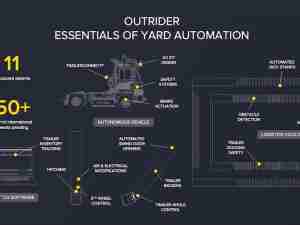FTR’s Trucking Conditions Index (TCI) for April, as reported in the June Trucking Update, achieved a record-high reading of 16.82, surpassing what had been an all-time high in March. Although most market factors were not quite as strong in April as they were in March, a reversal of March’s higher diesel prices improved overall trucking conditions. The relief in fuel costs was short-lived, but FTR expects solid freight demand coupled with high-capacity utilization and robust freight rates to keep the TCI quite strong in the near term and at least in positive single digits well into 2022 and perhaps beyond.
Details of the April TCI are found in the June 2021 issue of FTR’s Trucking Update, published May 28, which includes a discussion on how unemployment benefits might be contributing to disappointing driver hiring levels. Beyond the TCI and additional commentary, the Trucking Update includes data and analysis on load volumes, the capacity environment, rates, and the economy. FTR also publishes ongoing publicly available analysis on the impact of COVID-19 on freight transportation at www.ftrintel.com/coronavirus.
Avery Vise, FTR’s vice president of trucking, commented, “We have yet to see signs that the driver capacity situation is changing, and May’s weak payroll jobs data for trucking is one indication. Over the next few months, one potential constraint – generous unemployment benefits – will end. While those benefits likely contribute to the hiring challenge, we are skeptical that their demise will fundamentally change the dynamic. Given robust competition for labor – job openings in the economy are at an all-time high – trucking’s capacity challenge could linger longer than usual. One signal we are watching closely is the spot market. If rates and volumes begin to ease, that could indicate a balancing of freight demand and route guide capacity.”
The TCI tracks the changes representing five major conditions in the U.S. truck market. These conditions are: freight volumes, freight rates, fleet capacity, fuel price, and financing. The individual metrics are combined into a single index indicating the industry’s overall health. A positive score represents good, optimistic conditions. Conversely, a negative score represents bad, pessimistic conditions. Readings near zero are consistent with a neutral operating environment, and double-digit readings in either direction suggest significant operating changes are likely.







